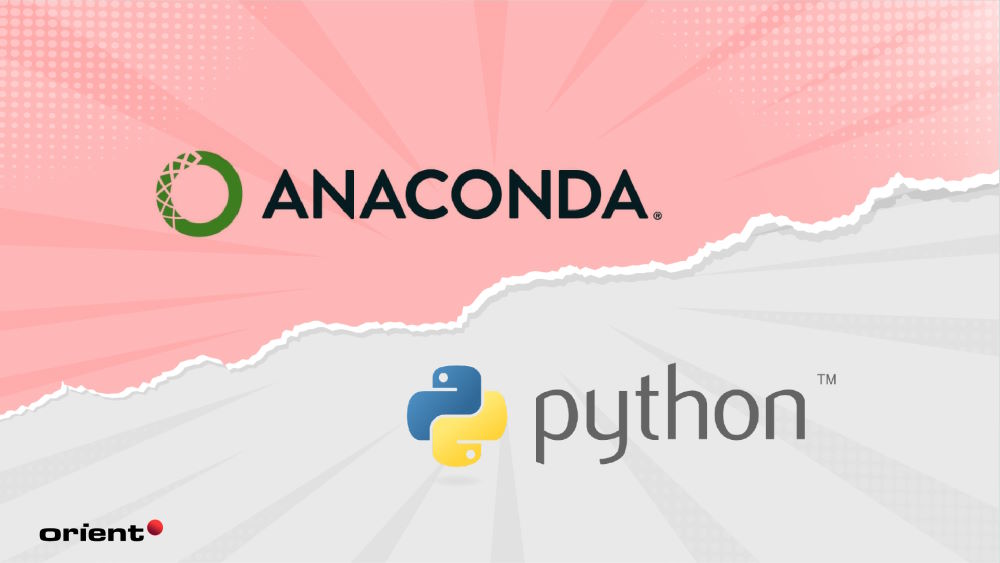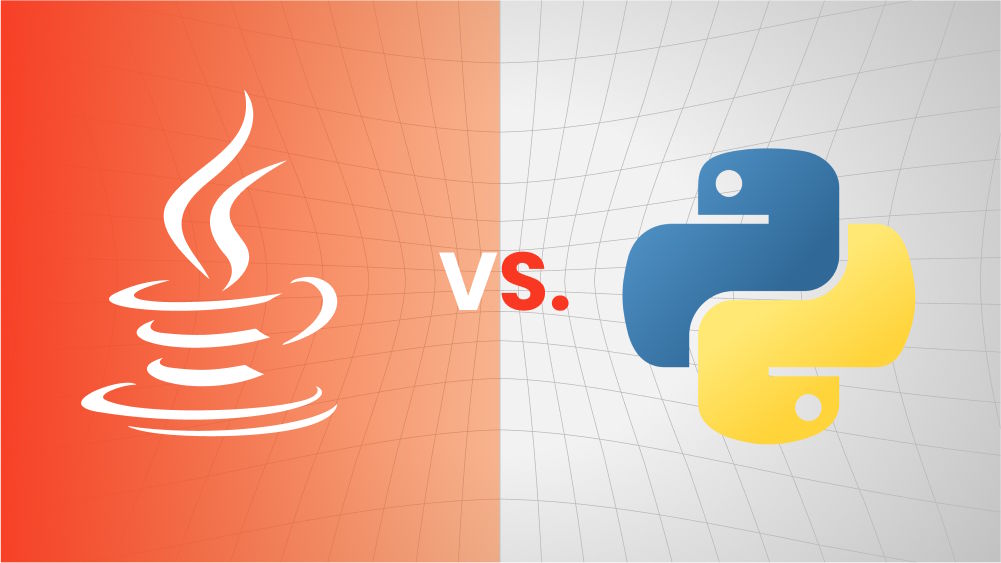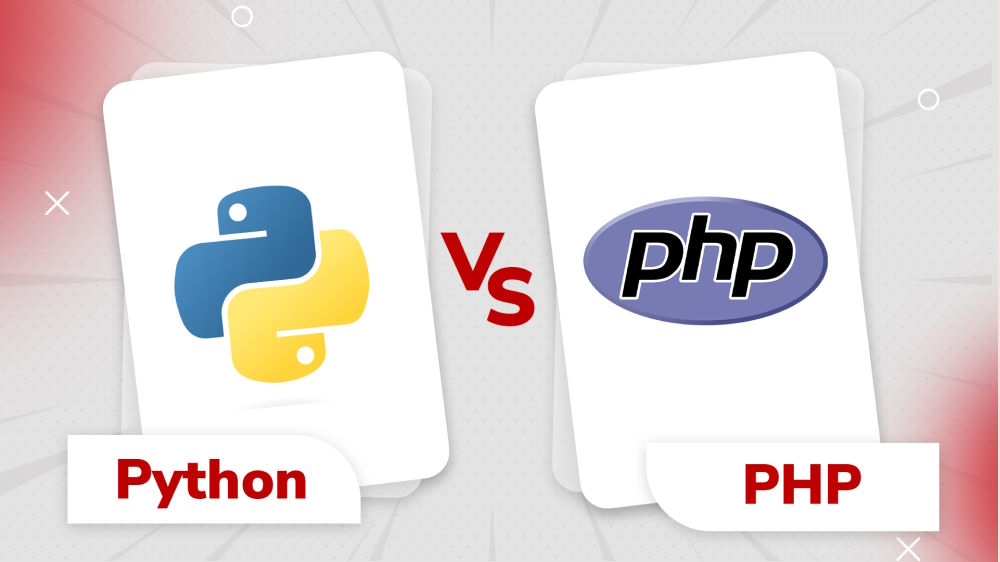Snake Showdown: Anaconda vs. Python - Unveiling the Key Differences

Content Map
More chaptersWelcome to the ultimate showdown between two mighty snakes in the programming world: Anaconda vs. Python. As the popularity of these two powerful tools continues to soar, it’s crucial to understand the key differences between them.
According to recent statistics, Python has established itself as one of the top programming languages globally, with an impressive 8.2 million active developers and counting. Its versatility, readability, and vast library ecosystem make it a go-to choice for various applications, from web development to data analysis.
On the other side of the ring, Anaconda - an open-source distribution of Python programming language, has emerged as a heavyweight in the realm of data science and scientific computing. Equipped with a comprehensive suite of specialized tools and libraries, Anaconda has captured the hearts of data scientists and researchers around the globe. In fact, it is estimated that over 20 million users harness the power of Anaconda for their data-driven projects and explorations.
In this snake showdown, we unveil the difference between Python and Anaconda that will help you determine which snake reigns supreme in your programming kingdom. Let the showdown begin!
Anaconda: A Powerful Data Science Platform

Anaconda is a data science platform that offers a free and open-source Python distribution, along with the R programming language. It is designed to simplify package management and deployment for data science tools and machine learning applications. It also provides a graphical user interface called Anaconda Navigator, which helps users launch applications and manage projects and environments.
One of the main advantages of Anaconda is that it includes over 1,500 popular packages for machine learning and data science, such as NumPy, pandas, sci-kit-learn, TensorFlow, PyTorch, and Jupyter Notebook. These pre-installed packages are ready to use, saving users time and effort. Another advantage of Anaconda is that it allows users to develop and manage isolated environments for different projects, ensuring compatibility and reproducibility of results. Users can easily install, update, and remove packages using the command-line tool “conda” or the graphical interface Anaconda Navigator.
The conda package manager system is based on “conda,” a cross-platform, language-agnostic, and open-source tool that manages dependencies and installation of packages. “conda” can install packages from various sources, such as the Anaconda Repository, Anaconda Cloud, PyPI, and GitHub.
Python: The Versatile General-purpose Language

Python is a programming language that was developed by Guido van Rossum in 1991. It is named after the comedy show Monty Python’s Flying Circus. Python is easy to read, write, and learn, with a clear and simple syntax and a large standard library. Python supports a wide range of programming paradigms, such as procedural, object-oriented, functional, and imperative. Python packages are widely used for various applications, ranging from web development and data science to scripting and automation.
One of the main advantages of Python is that it is free and open-source, with a large and active community of users. Another advantage of Python is that it is cross-platform, meaning it can run on many operating systems, such as Windows, Linux, and macOS. Python programs are also expressive and concise, allowing users to write less code but achieve more functionality. Python is also flexible and extensible, enabling users to integrate with other languages and technologies, such as C, Java, and .NET.
Python’s extensive library ecosystem is one of its main strengths, as it provides Python developers with a vast amount of resources and functionalities for various domains and purposes. Some of the most popular and widely used Python libraries are NumPy, pandas, sci-kit-learn, TensorFlow, PyTorch, Keras, spaCy, NLTK, OpenCV, Pillow, Pygame, Pyglet, and Panda3D.
Anaconda vs. Python Programming Language: Key Differences Between Python and Anaconda
Python vs. Anaconda programming are two popular tools used in the field of data science and analytics. While they have some commonalities, there are substantial variances between the two.
Performance and Speed
When it comes to performance and speed, Anaconda and Python exhibit some notable distinctions. Python, as a general-purpose language, offers excellent performance for a wide range of applications. Its simplicity and optimized interpreter contribute to its efficiency in executing code swiftly.
On the other hand, Anaconda’s strength lies in its specialized tools and libraries for data science and scientific computing. These components are designed to handle large-scale data processing and complex mathematical computations efficiently. In scenarios where data analysis, machine learning, or scientific calculations are involved, Anaconda often outperforms Python due to its tailored capabilities.
Various factors influence the performance of both Anaconda and Python:
Code execution plays a crucial role, with Python’s interpreted nature providing flexibility and ease of use but potentially sacrificing some speed compared to compiled languages. Anaconda, built upon the Python ecosystem, incorporates many pre-installed packages and dependencies that can impact performance depending on the specific tasks at hand.
Processing capabilities are another factor affecting performance. Python’s extensive library ecosystem allows developers to leverage optimized libraries for specific tasks, enhancing performance in those areas. In contrast, the Anaconda distribution offers a comprehensive suite of pre-installed data science libraries, enabling seamless integration and efficient execution of data-related operations.
To compare the performance of Anaconda and Python in different scenarios, we can look at some benchmarks and real-world examples. For instance, a study by IBM found that Anaconda was up to 28 times faster than Python for some machine learning tasks, such as linear regression, logistic regression, and random forest. Another example is the PyData benchmark, which measured the performance of Anaconda and Python for various data analysis and manipulation tasks, such as sorting, grouping, merging, and filtering. The results showed that Anaconda was up to 100 times faster than Python for some tasks, such as sorting a large data frame.
Development and Deployment
Another key difference between Python and Anaconda is their development and deployment environments. Anaconda provides an integrated development environment (IDE) called Spyder, which is a popular choice for data scientists and researchers. Spyder offers features such as syntax highlighting, code completion, debugging, testing, and interactive exploration. Spyder also integrates with other tools and libraries in Anaconda, such as Jupyter Notebook, IPython, Matplotlib, and NumPy, to create a comprehensive and user-friendly environment for data science.
Python, on the other hand, is a versatile and general-purpose language that can be used for different development needs, such as web development, game development, software development, and more. Python does not have a default IDE, but there are many options available, such as PyCharm, Visual Studio Code, Eclipse, and Sublime Text. Python also supports a wide range of frameworks and libraries for various domains, such as Django, Flask, PyGame, TensorFlow, and more.
When it comes to deployment, both Anaconda and Python have their advantages and disadvantages. Anaconda, with the package manager conda makes it easy to create and manage virtual environments, which are isolated and reproducible environments that contain specific versions of Python and other packages. This can help avoid dependency conflicts and ensure compatibility across different platforms and devices. However, Anaconda can also be bulky and complex to deploy, especially for web applications and cloud services. Anaconda may also require more disk space and memory than Python.
Python, on the other hand, is more lightweight and flexible for deployment, as it can run on any platform and device that supports Python versions. Python also has many tools and services that can help with deployments, such as pip, setup tools, Docker, Heroku, and AWS. However, Python may also face some challenges with deployment, such as ensuring that the required libraries and packages are installed and updated and that the code is compatible with different versions of Python and other dependencies.
Community and Support
The last key difference between Python and Anaconda is their community and support systems. Python has an active and large community of users, developers, and enthusiasts who contribute to the development and improvement of Python and its ecosystem. Python also has rich and extensive online resources, forums, and documentation, such as the official Python website, Stack Overflow, Reddit, and PyPI. Python also receives frequent updates, bug fixes, and new features from the Python Software Foundation and the community.
Anaconda, on the other hand, has a smaller and more focused community of data scientists, researchers, and educators who use and support Anaconda and its ecosystem. Anaconda also has some online resources, forums, and documentation, such as the official Anaconda website, Anaconda Cloud, Anaconda Community, and Conda Forge. Anaconda also receives regular updates, bug fixes, and new features from Anaconda Inc. and the community.
Choosing the Right Snake: Factors to Consider

Both Python and Anaconda have their own pros and cons, depending on your specific needs and goals. Some factors to consider when choosing the right snake for your project.
Requirements of Your Project or Industry
The first factor to consider is the requirements of your project or industry. Depending on the nature and scope of your work, you may have different expectations and standards for your snake.
For example, if you are working on a large-scale or collaborative project, you may need to ensure that your code is compatible and reproducible across different platforms and environments. In this case, Anaconda may be a better choice, as it provides a consistent and portable way to manage your packages and dependencies and allows you to create and share virtual environments with other users.
On the other hand, if you are working on a small-scale or personal project, you may not need such a comprehensive and robust solution, and you may prefer to use Python directly, as it gives you more flexibility and freedom to install and update your packages as you wish.
The Learning Curve and Available Resources
If you are new to programming or data science, you may want to choose a snake that is easy to learn and use and that has a lot of documentation and support available. In this case, Python may be a better choice, as it simplifies the installation and configuration process and provides a user-friendly interface and a rich collection of tutorials and guides. Python also comes with a number of popular and useful packages and tools, such as NumPy, pandas, sci-kit-learn, or Jupyter Notebook, that can help you get started and enhance your productivity.
On the other hand, if you are an experienced or advanced programmer or data scientist, you may want to choose a snake that is more challenging and rewarding and that allows you to explore and experiment with different options and solutions. In this case, Anaconda may be a better choice, as it offers more diversity and variety in terms of packages and tools and enables you to customize and optimize your code according to your preferences and needs.
The Performance and Development Ecosystem
Depending on the type and complexity of your project, you may have different requirements and expectations for your snake. For example, if you are working on a computationally intensive or time-sensitive project, you may need a snake that is fast and efficient and can handle large amounts of data and calculations. In this case, Python may be a better choice, as it has a lower overhead and a higher speed than Anaconda, and it can leverage the power of native libraries and extensions, such as Cython and Numba, to boost its performance.
On the other hand, if you are working on a data-driven or analytical project, you may need a snake that is rich and powerful and that can provide a comprehensive and integrated solution for your data science needs. In this case, Anaconda may be a better choice, as it has a higher functionality and wider coverage than Python, and it can integrate with various data sources and platforms, such as SQL, Hadoop, and Spark, to enhance its data science capabilities.
However, it is important to note that Anaconda and Python are not mutually exclusive and that they can work together and benefit from each other. Anaconda is based on Python, and it can be used to access any Python library or package. Python can also use and access any Anaconda library or package as long as they are installed and compatible. Therefore, both Anaconda and Python have strong and supportive communities and systems that can help users achieve their goals and solve their problems.
Orient Software: The Snakes Handler You Are Looking For
To take advantage of the combined capabilities of Anaconda and Python, partnering with an experienced software development company can help maximize their potential. Leveraging Orient Software’s comprehensive Python and Anaconda capabilities is an ideal way to integrate these technologies smoothly and extract actionable insights from complex data quickly.
Orient Software’s team of Python and Anaconda experts can assist with all aspects of project implementation. This includes installing and configuring the optimal environment, integrating necessary libraries, designing workflows, developing custom analytics solutions, and deploying projects to production.







